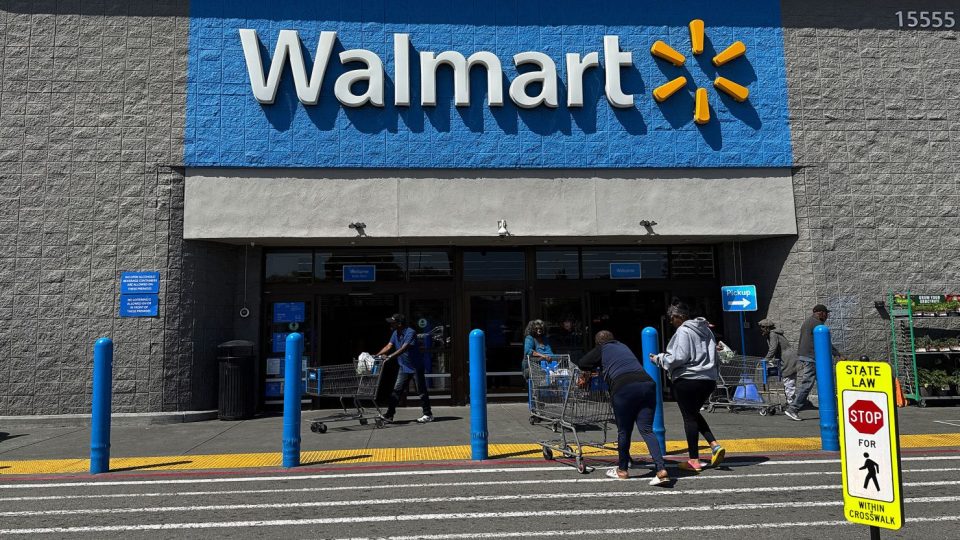Walmart Inc. (NYSE: WMT), the world’s largest retailer, is preparing shoppers for higher prices on some goods as the company grapples with the impact of President Donald Trump’s tariffs. The company’s CEO, Doug McMillon, made it clear on Thursday’s earnings call that the scale of the tariffs is too much for Walmart to absorb entirely, given the razor-thin margins that define the retail sector.
“We will do our best to keep our prices as low as possible. But given the magnitude of the tariffs, even at the reduced levels announced this week, we aren’t able to absorb all the pressure given the reality of narrow retail margins,” McMillon said.
Walmart’s warning comes as the U.S.-China trade war continues to ripple through global supply chains. While the company has historically managed to keep prices low through its massive scale and efficient logistics, the latest round of tariffs is testing those limits. McMillon was direct about the consequences: “The higher tariffs will result in higher prices.”
Retailers like Walmart operate with some of the slimmest profit margins in the business world. Even small increases in costs can have outsized effects on both pricing and profitability. Unlike some competitors, Walmart’s sheer size and purchasing power have allowed it to delay passing on costs to consumers. But as tariffs persist, the company is signaling that some of those costs will inevitably be shared with shoppers.
Despite these challenges, Walmart has continued to post strong financial results. In its most recent quarter, the company reported a 4.1% increase in revenue to $180.6 billion, with global e-commerce sales surging 16%. This growth is part of a broader trend: digital sales now account for a significant portion of Walmart’s business, and the company has invested heavily in expanding its online marketplace, fulfillment capabilities, and digital advertising.
However, the outlook for the year ahead is more cautious. Walmart has issued conservative guidance, forecasting net sales growth of just 3–4%, a sign that management is bracing for continued economic headwinds and the lingering effects of tariffs.
Walmart’s digital transformation has helped cushion some of the blow from rising costs. The company’s e-commerce operations have grown consistently, with 12 consecutive quarters of double-digit online growth, and Sam’s Club e-commerce sales up 24%. Membership programs like Walmart+ have also seen double-digit growth, driven by higher-income shoppers seeking convenience and value.
The company’s retail media arm, Walmart Connect, has become a significant profit driver, with advertising revenue jumping 24% year over year. These high-margin revenue streams are increasingly important as traditional retail margins come under pressure from external factors like tariffs.
For consumers, the message is clear: prices on some goods will rise. Walmart’s commitment to keeping prices low remains, but the company is being transparent about the limits of what it can absorb. With 63% of consumers now citing price and discounts as their primary purchase drivers, Walmart’s ability to balance cost pressures with customer expectations will be key.
At the same time, the company is investing in technology and logistics to improve efficiency, including AI-driven inventory management and expanded same-day delivery, now available to 93% of U.S. households. These moves are designed to maintain Walmart’s competitive edge even as the broader retail environment becomes more challenging.
Walmart’s position as the world’s largest retailer gives it unique leverage in negotiations with suppliers and the ability to innovate at scale. But as tariffs continue to bite, even Walmart is finding it difficult to shield consumers from higher costs. The company’s evolving digital strategy and focus on high-margin revenue streams may help offset some of the pressure, but shoppers should expect to see some price increases in the months ahead.
Walmart remains a bellwether for the retail industry, and how it navigates these challenges will be closely watched. The company’s willingness to speak candidly about the impact of tariffs is a reminder that global trade tensions have very real consequences for American consumers and businesses alike.

